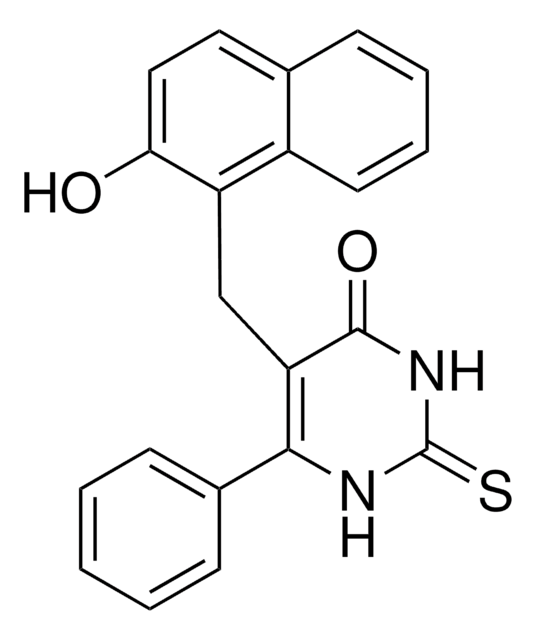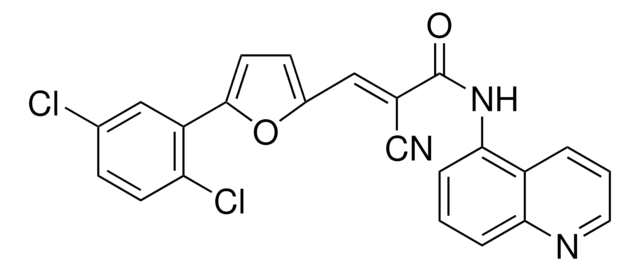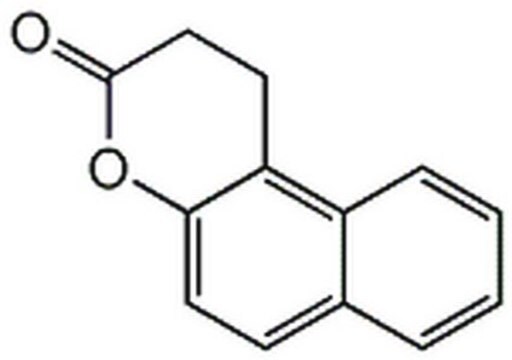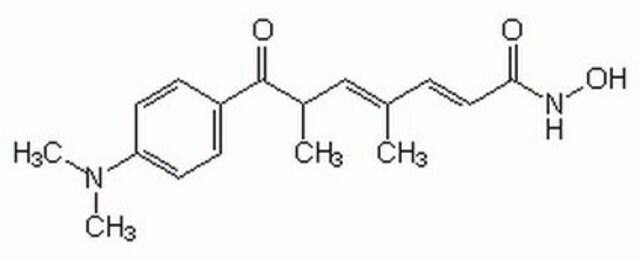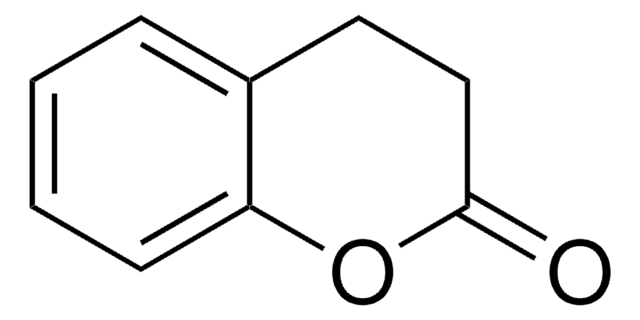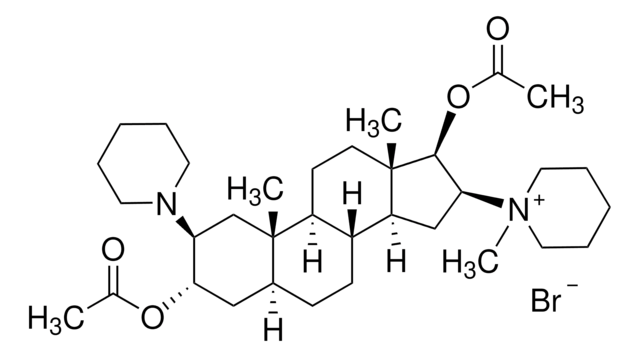S4068
Splitomicin
≥98% (HPLC), powder
Sinónimos:
1,2-Dihydro-3H-naphtho[2,1-b]pyran-3-one
About This Item
Productos recomendados
Análisis
≥98% (HPLC)
formulario
powder
temp. de almacenamiento
2-8°C
cadena SMILES
O=C1CCc2c(O1)ccc3ccccc23
InChI
1S/C13H10O2/c14-13-8-6-11-10-4-2-1-3-9(10)5-7-12(11)15-13/h1-5,7H,6,8H2
Clave InChI
ISFPDBUKMJDAJH-UHFFFAOYSA-N
Aplicación
Acciones bioquímicas o fisiológicas
Características y beneficios
Producto relacionado
Código de clase de almacenamiento
11 - Combustible Solids
Clase de riesgo para el agua (WGK)
WGK 3
Punto de inflamabilidad (°F)
Not applicable
Punto de inflamabilidad (°C)
Not applicable
Equipo de protección personal
Eyeshields, Gloves, type N95 (US)
Certificados de análisis (COA)
Busque Certificados de análisis (COA) introduciendo el número de lote del producto. Los números de lote se encuentran en la etiqueta del producto después de las palabras «Lot» o «Batch»
¿Ya tiene este producto?
Encuentre la documentación para los productos que ha comprado recientemente en la Biblioteca de documentos.
Los clientes también vieron
Artículos
Epigenetic modifications are thought to occur through two key interconnected processes—DNA methylation and the covalent modification of histones.
Nuestro equipo de científicos tiene experiencia en todas las áreas de investigación: Ciencias de la vida, Ciencia de los materiales, Síntesis química, Cromatografía, Analítica y muchas otras.
Póngase en contacto con el Servicio técnico